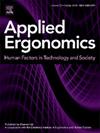COVID-19疫苗接种系统:处于“尖端”的人为因素
IF 3.4
2区 工程技术
Q2 ENGINEERING, INDUSTRIAL
引用次数: 0
摘要
目的分享使用人类可靠性分析(HRA)方法评估苏格兰COVID-19疫苗接种系统的关键经验教训。方法项目数据于2021年2月在艾尔郡和阿兰国家医疗服务体系(NHSAA)收集,采用文献分析(《服务提供手册》,2020年)、观察(2次现场访问)和研讨会(n = 8, 26名参与者)。系统人为错误减少和预测方法(SHERPA)是一个人为可靠性分析框架,可作为安全评估或安全案例的一部分,以确定系统是否“足够安全”,并提供建议,通过减少潜在的错误来提高安全性。在本文中,它被用来评估服务提供系统并提出建议。结果医院已实施了多种恢复机制和风险控制措施。18个问题需要额外的风险控制,分为三个主题。提高员工的培训意识和管理期望。改善设备和信息的提供。实施额外的检查和应急措施。提高员工的培训意识和管理期望。改善设备和信息的提供。实施额外的检查和应急措施。结论研究结果可用于改善当前的服务提供,并为未来时间紧迫的公共卫生疫苗接种规划的安全设计和提供指导。本文章由计算机程序翻译,如有差异,请以英文原文为准。
COVID-19 vaccination systems: Human Factors at the ‘sharp end’
Purpose
To share key learnings from the assessment of a COVID-19 vaccination system in Scotland using a Human Reliability Analysis (HRA) approach.
Method
Project data were collected in February 2021 in NHS Ayrshire and Arran (NHSAA) – the regional health authority - using document analysis (Service Delivery Manual, 2020), observations (2 site visits), and workshops (n = 8, with 26 participants). The Systematic Human Error Reduction and Prediction Approach (SHERPA) is a framework for human reliability analysis that can be used as part of a safety assessment or safety case to determine whether the system is ‘safe enough’ and provide recommendations to improve safety by mitigating error potential. In this paper it was used to assess the service delivery system and make recommendations.
Results
Many recovery mechanisms and risk control measures had already been implemented by NHSAA. Eighteen issues required additional risk control, grouped into three themes.
- 1.Improve staff training and awareness, and the management of expectations.
- 2.Improve equipment and information provision.
- 3.Implement additional checks and contingencies.
- 1.Improve staff training and awareness, and the management of expectations.
- 2.Improve equipment and information provision.
- 3.Implement additional checks and contingencies.
Conclusion
The findings were used to improve the current service delivery and provide guidance for the safe design and delivery of future rollouts of time-critical public health vaccination programmes.
求助全文
通过发布文献求助,成功后即可免费获取论文全文。
去求助
来源期刊

Applied Ergonomics
工程技术-工程:工业
CiteScore
7.50
自引率
9.40%
发文量
248
审稿时长
53 days
期刊介绍:
Applied Ergonomics is aimed at ergonomists and all those interested in applying ergonomics/human factors in the design, planning and management of technical and social systems at work or leisure. Readership is truly international with subscribers in over 50 countries. Professionals for whom Applied Ergonomics is of interest include: ergonomists, designers, industrial engineers, health and safety specialists, systems engineers, design engineers, organizational psychologists, occupational health specialists and human-computer interaction specialists.
 求助内容:
求助内容: 应助结果提醒方式:
应助结果提醒方式:


